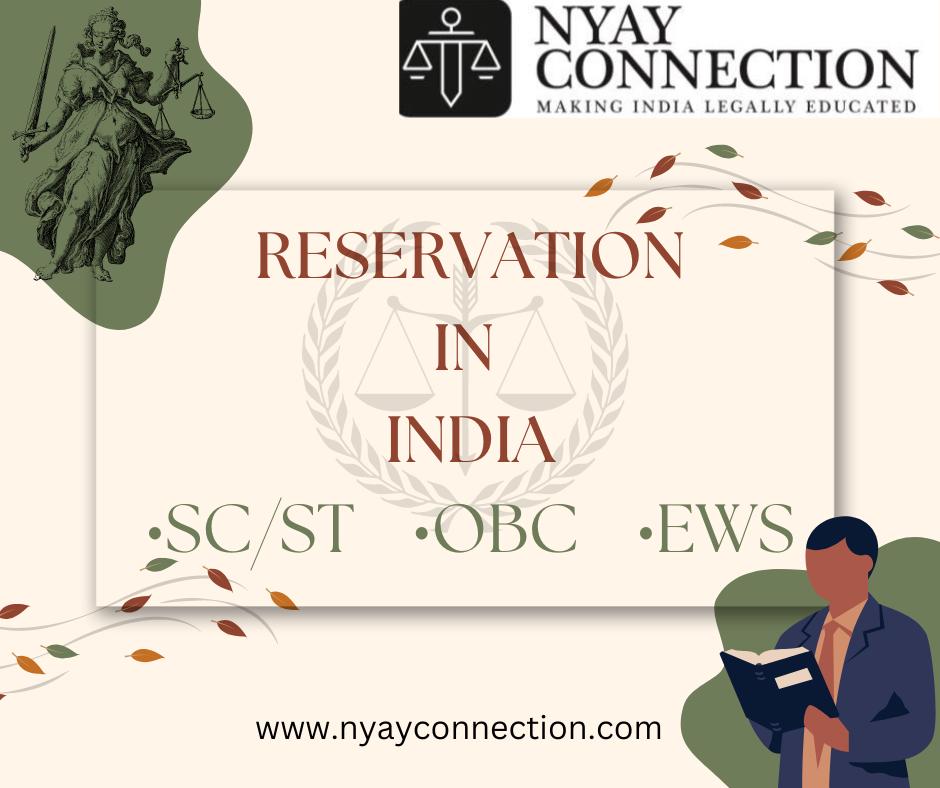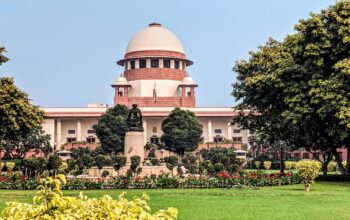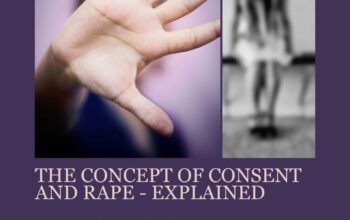BRIEF HISTORY
Reservations in favor of the backward classes in India goes a long way back even before India received its independence from the British. The Backward Classes movement first gathered momentum in Tamil Nadu where reservation was introduced much before independence. There were several demands of reservation and other benefits for backward classes in many parts of India, this necessitated the Govt of India to appoint a Backward Classes Commission under Article 340 of the Constitution on 29th January 1953, in view of the Article 16 (4) of the Indian Constitution.
REJECTION OF KAKA KALELKAR COMMISSION
The Backward Classes Commission, most popularly known as the Kaka Kalelkar Commission, was established to investigate the actual conditions of socially and educationally backward classes within the territory of India taking account of all the challenges and hardship they face and to provide suggestions as to the plans that should be taken by the Govt to improve them. The Commission in classifying the backward classes took into consideration their traditional occupation and profession, the percentage of literacy or the general education advancement, the population of the community and their distribution in different places. The Commission also was of opinion that the social position of the community in the caste hierarchy and its representation in the Government services was to be considered. The Chairman of the Commission, Kaka Kalelkar, in his enclosing letter to the President, pled to reject the report as he was having a second opinion after signing it that reservation on the basis of caste would not be in the interest of the society and country and that caste needs to be removed altogether, however preference ought to be given to those neglected social classes and to help the extremely poor and deserving members of all the communities. The report which was submitted in the year 1955 was rejected in 1961 for want of better approach in determining the criteria to identify the backward classes in article 15(4).
MANDAL COMMISSION
The Government of India appointed the second backward classes Commission which is known as Mandal Commission in 1979 Investigate the conditions and recommend the idea for defining the socially and educationally backward classes of citizens and to provide steps for their upliftment and also to encourage such backward classes for the reservation of appointments or posts in the public service.
Through the mandal commission’s report, the Government of India in 1990 took a first step to implement the recommendations of the Commission. The Government of India introduced a reservation of 27% for backward classes and formal orders were issued in office memorandum providing reservation of 27% of the vacancies to be filled by direct recruitment in civil posts and service for socially educationally backward communities.
Many sought to stay the order by filing writ petitions in the Supreme Court questioning the order. And thus, the official memorandum was stayed for some time until the Supreme Court could finally dispose of the petitions.
- A Writ petition Indra Sawhney etc. Vs Union of India & Ors, was filed before the Supreme Court, which the apex court held that the official memorandum what’s valid and enforceable subject to exclusion of the socially advanced (creamy layer) from the notified Backward Classes. The matters which were being looked at are below:
- Whether Clause (4) of Article 16 is an exception to Clause (1) of Article 16?
- Whether special provisions of reservations that can be made in favor of backward class of citizens is exhaustive in Art 16(4)?
- Whether reservations could be made or grant of permission to extend preference or concessions for backward class of citizens is enough under Article 16(4)?
- What is the meaning of the expression Backward classes of citizens in Article 16?
- Whether backward classes could be identified through caste alone?
- Whether class designated as a Backward class should be similar to the conditions of SC & ST?
- Whether the ruling of 50% Reservation in the Balaji a binding rule or only a rule of caution?
- Whether the decision in the T Devadasan case i.e., carry forward of the unfilled reservation posts for the SC /ST to the next year is valid?
- Whether Article 16 permits reservation in matters pertaining to promotions?
- Whether reservations are anti- meridian and to and what is the scope of Art 335, 38(2) & 46 of the constitution in interpreting Article 16?
- Below were some of the findings of the Judgement by the Supreme Court :
- The court noted that treating unequals as equals is greatest injustice and held that Article 16(1), being a facet of Article 14, permits reasonable classification. Article 16(4) likewise clarifies and explains that classification on the basis of backwardness and is not an exception. The rule giving preference to an un-represented or under-represented backward community does not contravene Articles 14, 16(1) & 16 (2).
- Any concessions or preferences to members of backward classes under 16 (1), can also be extended under Clause (4) itself, it is exhaustive to the sense that any special provisions could be made within Article 16(4) with no further special treatment available outside the said article.
- The special provisions made with respect to reservations of backward classes is exhaustive with in Art 16(4) with some rare exceptions for Art 16 (1).
- The Supreme Court of India held that backward classes could not be identified solely on the basis of caste. It ruled that a backward class could only be identified by considering various factors, such as social and educational backwardness, economic backwardness, and other relevant factors. Caste may be a relevant factor in identifying backwardness, but it cannot be the sole criterion.
- In order for one to qualify for being called a ‘backward class citizens’ he or she must be a member of a socially and educationally backward class. It is social and educational backwardness of a class which is material for the purposes of both Article 15(4) and 16(4).
- backward class of citizens in Article 16(4) takes in Scheduled Tribes, Scheduled Castes and all other backward classes of citizens including the socially and educationally backward classes.
- The carry forward rule was bad and in-valid, but when rule takes a different form than the one considered in the Devadasan case. The rule may provide that incase of unavailability of the SC/ST candidates to fill the reserved vacancies; general (open competition) candidates shall not be considered to fill such vacancies.
- 27% of the vacancies in civil posts and services under the Government of India shall be reserved for Socially & Economically Backward Classes (SEBC) by direct recruitment.
- The Apex court held that the Backward Classes is to be identified through caste and that the creamy layer of the Backward Classes is to be excluded in reservation provided that in no case to exceed 50% ceiling.
ARTICLES FOR RESERVATION IN THE CONSTITUTION OF INDIA
- Article 15(4): This article empowers the State to make special provisions for the advancement of socially and educationally backward classes of citizens, including the Scheduled Castes (SCs), Scheduled Tribes (STs), and Other Backward Classes (OBCs).
- Article 16(4): Enables the State to provide for reservation in appointments or posts in favor of any backward class of citizens, including the SCs, STs, and OBCs, which are not adequately represented in the services under the State.
- Article 46: Directs the State to promote the educational and economic interests of the weaker sections of society, particularly the SCs, STs, and OBCs, and protect them from social injustice and exploitation.
- Article 340: Provides power to the President to appoint a commission to investigate the conditions of socially and educationally backward classes and suggest measures to improve their welfare.
- Article 342: This article empowers the President to specify the list of Scheduled Castes and Scheduled Tribes for each state and union territory.
THE CONSTITUTION (ONE HUNDRED AND THIRD AMENDMENT) ACT, 2019
- Until the amendment, the constitution considered backward classes as only those belonging to the social weaker community i.e. SC/ST, but by the 103rd amendment it included any citizen who is economically backward could receive help from the Govt in making special provisions for them.
- Insertion to the Article 15 with a sub clause 6, which empowers the state to make any special provision to uplift any economic weaker sections of citizens who do not belong to the SC/ST community.
- Insertion to the Article 16 with a sub clause 6, Provides for an extra reservation of maximum 10% of the posts in each category for any economic weaker sections of citizens who does not belong to the SC/ST community.
- Janhit Abhiyan v Union of India 2022 : – In this case the 103rd Amendment was questioned if the violated the fundamental structure the constitution of granting the reservations based solely for the educational Weaker Sections to the exclusion of the poor from the SC/ST/OBC communities. And if the amendment violates the previous decision by going beyond the ceiling of 50% limit for reservation. It was held that provision of the 10% additional reservations to the EWS would not result in any damage to the existing fundamental structure of the constitution.

RESERVATION OF OBCs AND SUB-CATEGORIES OF OBCs
In light of the decision in Indra Sawhney etc. Vs Union of India, which resulted in the requirement of the reservation of 27% for other backward communities other than SC& ST.
The Ministry of Social Justice & Empowerment in 1999 passed a resolution to implement the reservation for the citizens belonging to the OBC category.
For civil service positions, the reservation for OBC is 27 % in case of direct recruitment by open competition and 25.84% for other than open competitions across India.
For recruitment in group C & D the where the candidates are mostly from a locality or region, the reservation is in proportion of the population in the respective state and remains within the limit of 50 % and reservations for OBC’s remaining under the limit of 27%.
And the National Commission for Backward Classes was set up to handle the requests and complaints of over inclusion and under inclusion in the OBC central list.
In October 2017, The President formed a commission under Article 340 of the constitution. The commission was to categorize almost 3,000 caste groups to OBC’s and was given 12 weeks to accomplish the task. The commission was also to recommend how the reservation of 27 % be distributed in those sub-categories.
The arduous task came to a standstill due to COVID-19, the commission would soon submit its report.
This article is written by Charles Franklin. He can be reached at charlesfranklin.ng@gmail.com for feedback relating to the article.




